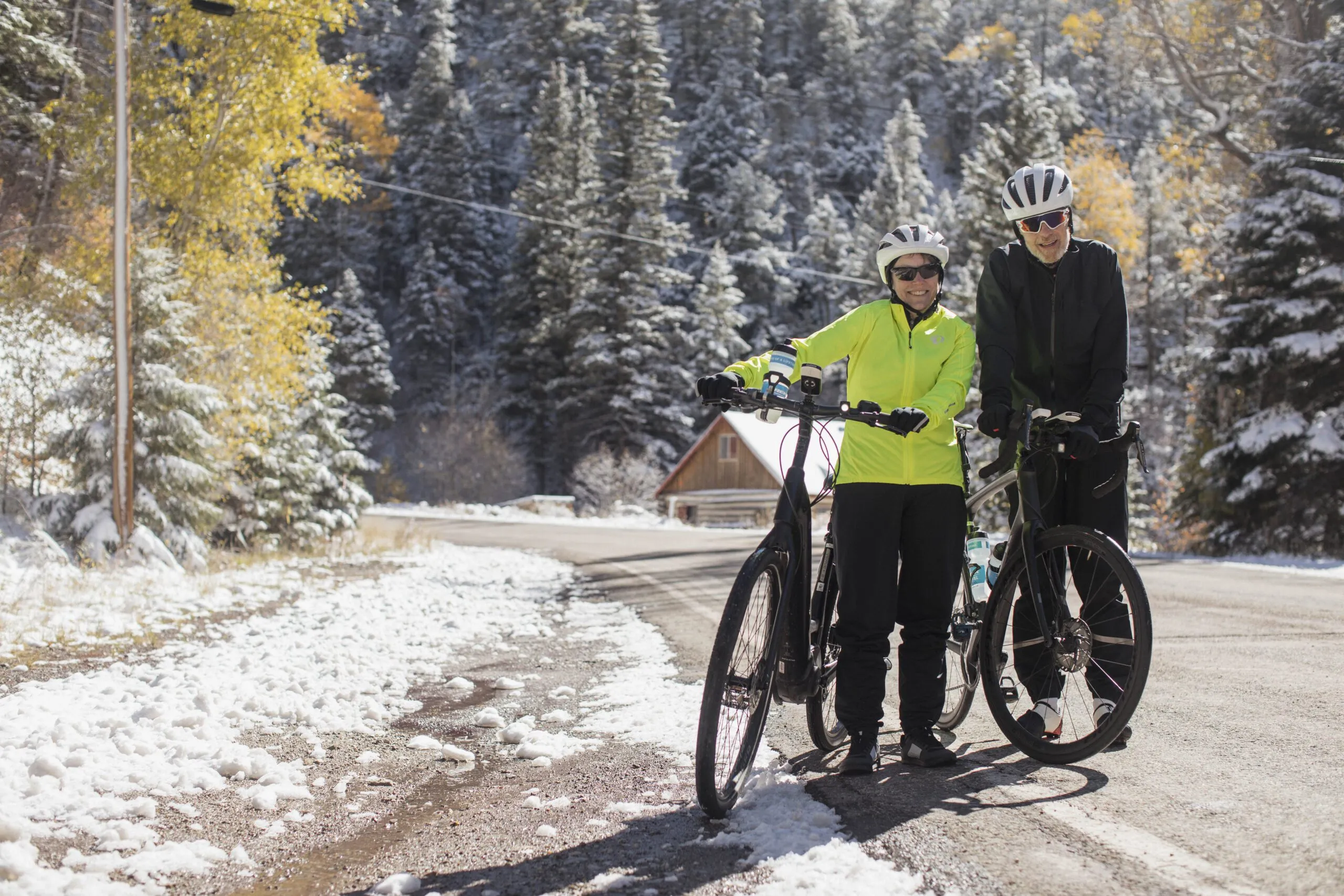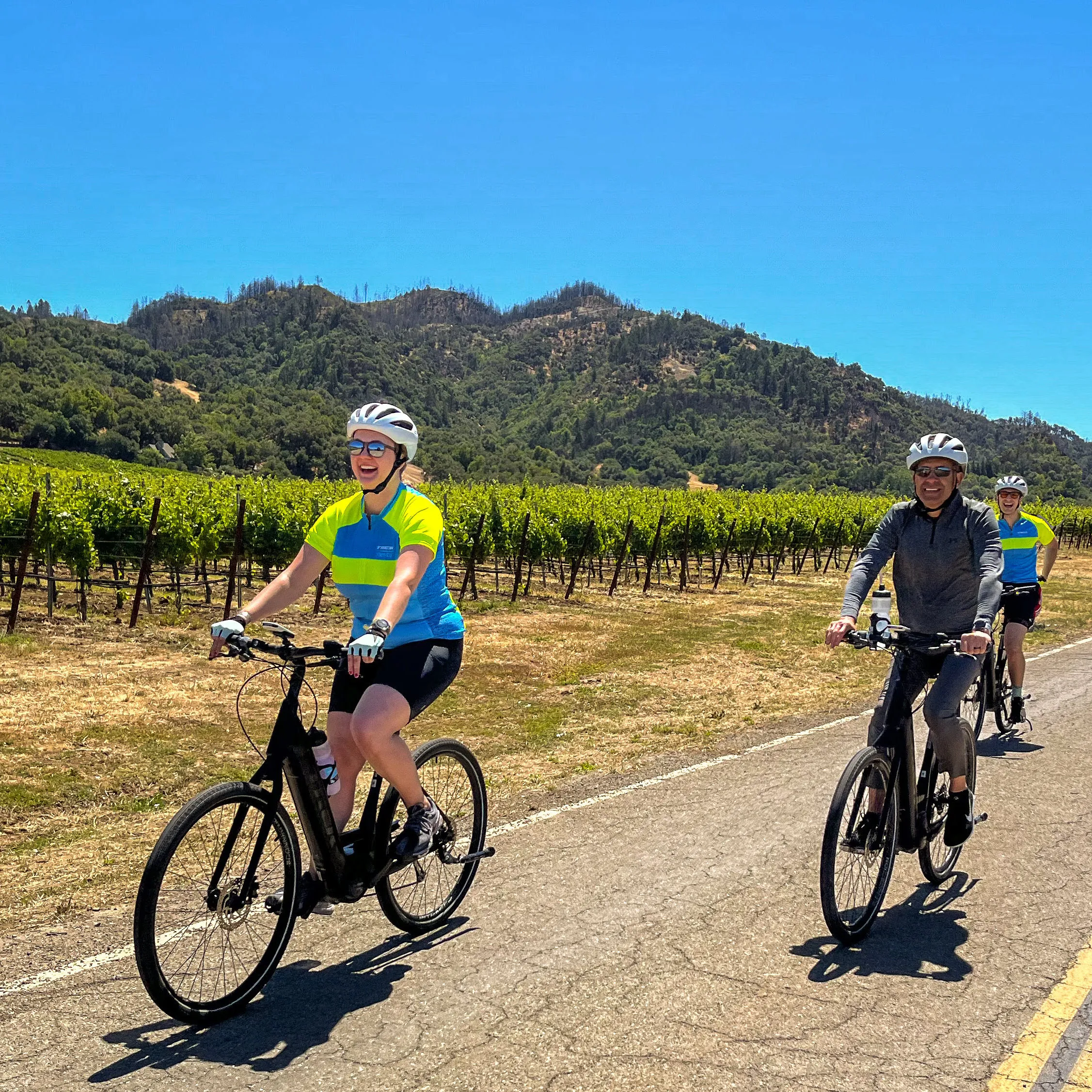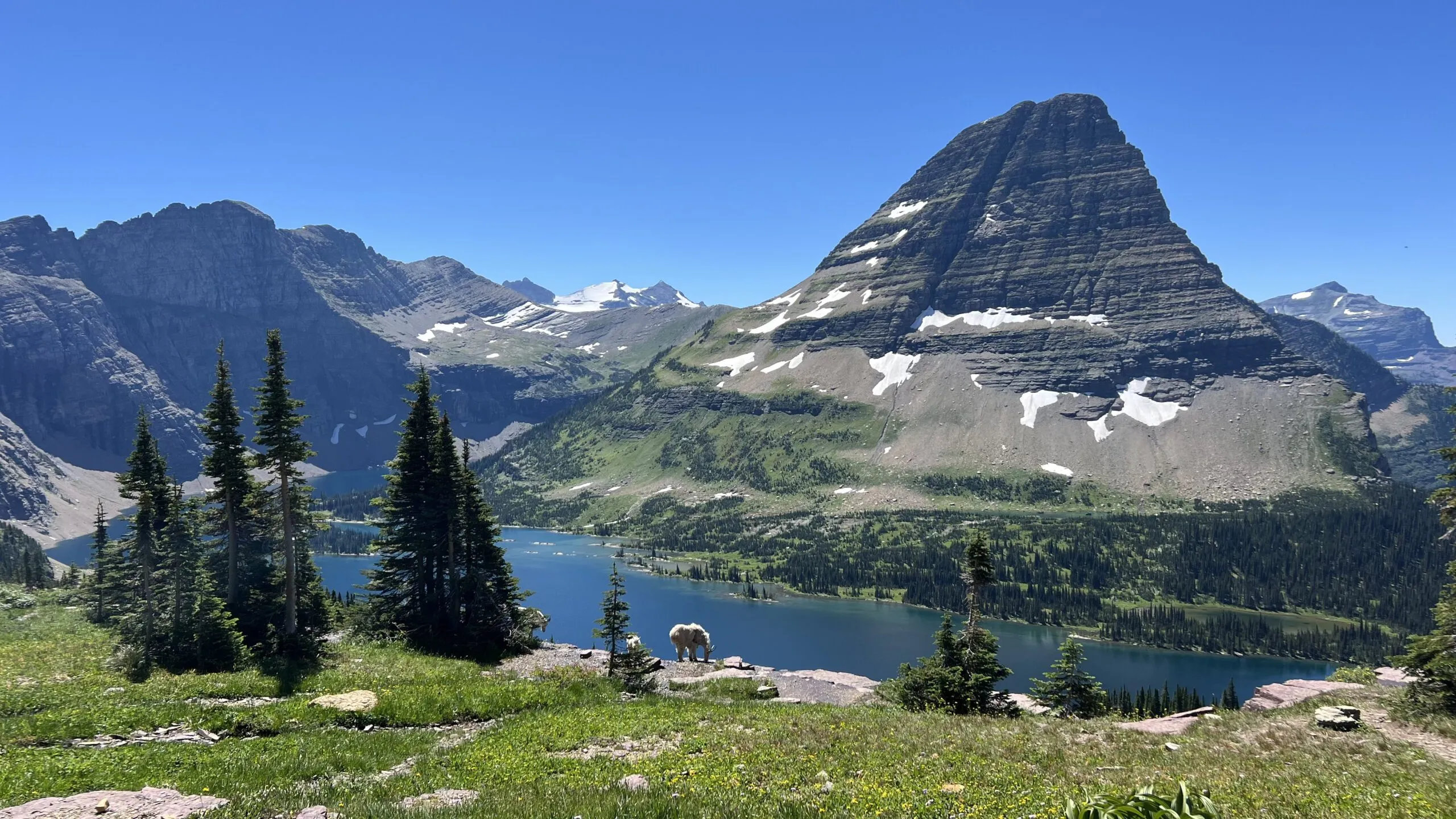
It’s cold outside, but that doesn’t mean your fitness should go cold, too. Get our winter cycling training tips, tricks, and training plans to keep riding through all seasons.
It’s easy to let your fitness slide in the winter. Eating habits change, weather becomes less inviting, and summer cycling season seems like a faint memory. But here’s the truth that nobody ever tells you: cycling training in the winter is what riding strong in the summer is all about. The winter is where you lay the groundwork for great season; the kind of groundwork you just can’t build in a few rides. I’ve been riding and training for almost 20 years, and in that time, I’ve learned that winter is work season. Here are a few tips for training, dressing for, and succeeding despite the precipitous drop in temperature.

Winter Cycling Training: Zone 2 is Number 1
If you’re familiar with cycling training, you might have heard of “zone 2” riding. The rest of us refer to this as “base training,” and it’s what winter is all about. Base training is just that: the foundation of riding stronger, later. With a proper base, you’ll have more endurance, more repeatability, and the fitness to go on long rides day after day. A good base also makes hard efforts feel easier, so even if you only plan on riding short distances in the summer, base is your friend.
The good news? Building it is as easy as Thanksgiving pecan pie. It just requires dedication to your “Zone 2” heart rate. If you can test yourself, great. You’ll get a Zone 2 heart rate from that test. If you don’t want to test, you can also ride by feel, in the zone I call “comfortably uncomfortable.” It’s where you’re working hard, but you can sustain the effort for an extra long period of time. It’s usually anywhere from 65%-80% of your maximum heart rate. And then the challenge is to spend as much time in that zone as possible. Five hours a week? Great. 10 is even better. At 20 hours, you’re approaching pro fitness.
The trick is to avoid disruptions to your time in zone. No stops. No freewheeling. No coasting. Just spend as much uninterrupted time as possible. After one to two months of this, you’ll end up with stronger legs, and you’ll be ready for harder efforts later.

Winter Cycling Training Gear
Cold changes everything. It either forces you indoors, or forces you to layer up for outdoor riding. Let’s take a look at each.
Outdoors
Since I’m in Colorado, I can count on one thing: Change. The weather starts cold in the morning and warms up fast. And the only way to protect against changing weather is layering up. For every ride, I put on several layers to stay warm at first, and gradually peel them off as the sun comes out. That means bib tights or leg warmers, a base layer, long sleeve jersey, jacket, gloves, a hat or balaclava, and either shoe covers or winter shoes. Check out our favorite winter riding gear on trekbikes.com.
Indoors
The rise of smart trainers and online training software has completely changed the experience of riding inside. Today, cyclists can get on their Peloton spin bikes, or they can choose to recreate the experience of riding outside with a direct drive (wheel-off) smart trainer that adjusts the resistance for them, and an online gaming simulation or software like Zwift or TrainerRoad. There are plenty of options to choose from, and if you decide you really love it, you can augment the experience with tools to help you climb or even rock the bike underneath you. Browse trainers and get riding inside.

Winter Cycling Training Programs
Like you probably heard from your parents before – failing to plan is only planning to fail. Any great summer season starts with a great plan, and there are plenty of options to choose from. I personally have used several, but my current favorites include Zwift and VisionQuest. Zwift offers indoor training plans for winter, with specific options depending on the nature of your event. You just need to start by taking a fitness test, guesstimate the number of hours you can commit to per week, choose your plan, and go. The software takes care of the rest.
VisionQuest offers a similar program, only with more options, more ways to customize based on your goals, and more one-on-one time from a coach. They also understand Trek Travel trips better than any other coaching service available, so they’ll know how to get you in shape for a killer cycling vacation.

Winter Cycling Training Camps
If you just can’t bring yourself to layer up and get outside, or the idea of spending an hour on a stationary bike sounds like torture, there’s only one option left: ride where it’s sunny. Luckily, Trek Travel understands your needs, which is why we offer several winter training camp options to sunny getaways like California or the beaches in Mallorca, where there’s nothing to do but ride in short sleeves and shorts.
Just remember – even in winter, your training plan should still be the same. Putting in the winter miles, whether it’s in your basement, in your wool jersey, or in a warm escape, will still lay the foundation for an exceptional summer of strong cycling.
We hope these winter cycling training tips have been helpful! Have a great winter season!
Join us for training at a ride camp







